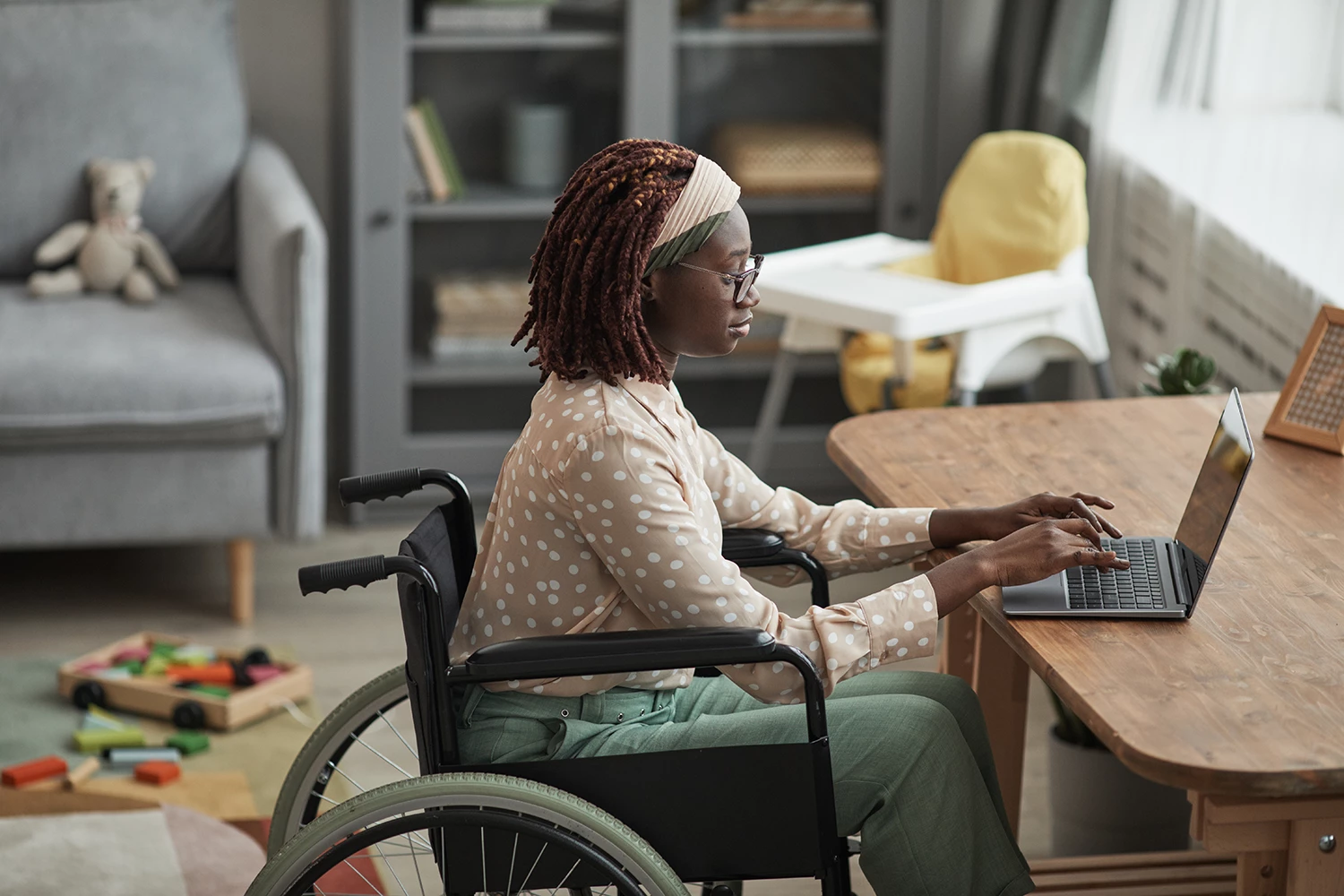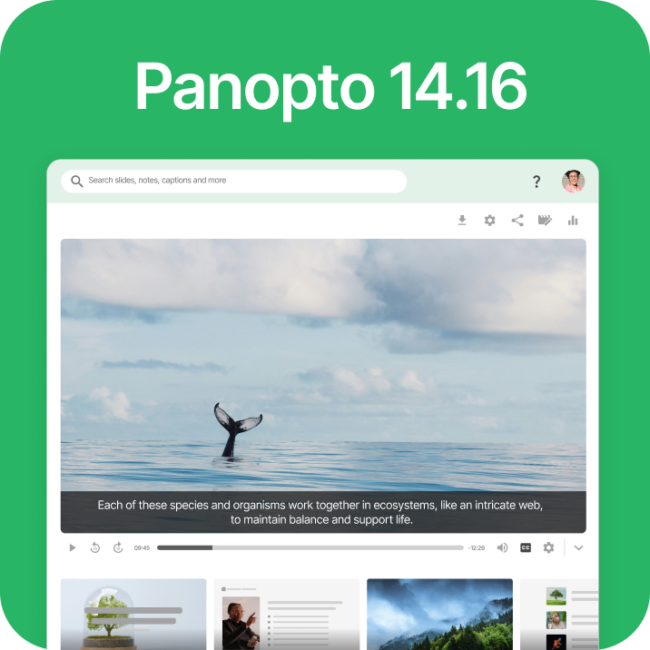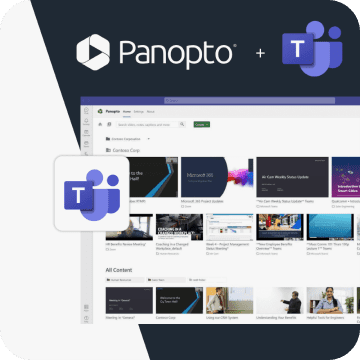- Education
Advancing Accessible Learning Experiences

Flipped classrooms and blended learning environments were once a foreign concept. Today, the evolving needs of students and the changing concept of the learning environment have created a world where accessible remote learning is essential.
Asynchronous video, virtual and augmented reality, and other digital mediums create learning experiences far beyond the physical limits of the in-person university. However, without accessibility considerations these new student-centered edtech creations can actually be out of reach for many students.
5 Ways to Improve Accessibility in the Higher Ed Classroom
Learn how to reduce barriers to learning, ensure ADA compliance, and support educational equity at your institution.
In this guide, you will learn
- What is Accessibility in Education
- How the Americans with Disabilities Act (ADA) Impacts Higher Education
- How Lecture Capture Supports Accessible Learning Experiences
- How to Record ADA-Compliant Lectures
What is Accessibility in Education?
Accessibility provides an equal opportunity of access for all, regardless of a number of factors including disability and socioeconomic status. This may relate to how a person gains access to, interacts with, or benefits from electronic information, programs, or applications.
Accessibility reduces barriers to learning, ensures compliance with the Americans with Disabilities Act (ADA), and supports educational equity at your institution or company. Accessibility doesn’t only relate to niche tools supporting a minority of students. Providing universal design for learning is vital to implement, so that providing accessible learning experiences becomes a part of the educational process for all learners.
The very definition of accessibility in higher education is changing in itself, and as a result a large number of students will need accessibility features at some point. Accessibility can be created with a number of people in mind, including people with:
- Physical disabilities
- Special educational needs
- Mental health issues
- Illnesses, injuries, or otherwise temporarily medically impaired
- Limited internet access at home
- Caregivers
- Working students/the third shift
- Student athletes
- ESL speakers
- Who commute for educational purposes
- Who require flexible learning materials
More accessible learning experiences benefit all learners. A web page or video lecture with accessibility features is typically easier to navigate and a better experience for all students.
How the Americans with Disabilities Act (ADA) Impacts Higher Education
There are a number laws and legislation that have been created for accessibility implementation. The ADA was created in 1990 to provide equal rights for people with disabilities and prevent discrimination. Other important accessibility law includes:
- Section 504 of the Rehabilitation Act aims to remove barriers for individuals with disabilities. It states that educational facilities must provide equal access and support to students with disabilities.
- Section 508 of the Rehabilitation Act requires agencies to provide individuals with disabilities equal access to websites, emails, digital documents, and other electronic data. Compliance with Section 508 is a requirement for institutions to receive financial aid, and is a major concern for academic technologists.
- WCAG (Web Content Accessibility Guidelines) outline how to make content on the internet more accessible to people with disabilities. Conforming to the specific guidelines and principles listed in WCAG 2.1 is increasingly a best practice for accessible lecture capture, recordings, playback, and all other digital resources. The guidelines detail success criteria on how to increase accessibility to content including text spacing, language of the page, and audio descriptions, for example.
What are the implications of not prioritizing accessibility?
In addition to removing the opportunity for an equitable learning environment, the ramifications of not prioritizing accessible learning experiences both remotely and in hybrid classrooms include:
- Poor learning outcomes
- Student attrition
- Loss of federal funding
- Reduced enrollment and student aid dollars

💡 78% of students felt that watching lectures again would help improve retention of class materials.
How Lecture Capture Supports Accessible Learning Experiences
As the notion of the classroom changes with hybrid and distance learning, higher education institutions are increasingly prioritizing accessible learning experiences that improve learning outcomes for all students. Every student faces barriers to learning to some extent, and it’s up to leaders in education to figure out how to best mitigate those challenges.
Lecture capture is a vital resource for both students and teachers, one that can improve student performance and experience, while staff have reported that watching their lecture recording back had a positive impact on their teaching.
Key lecture accessibility features
Captioning
Students with hearing impairments aren’t the only ones who utilize captions; many others find it helpful when taking notes, for instance. Panopto’s caption partners 3Play Media, Rev, and Verbit provide our users with seamlessly integrated captions.
Screen readers
Many people—other than those who may have vision impairments—often benefit from having text that includes an audio component.
Keyboard accessibility
Keyboard accessibility features such as shortcut keys enable students to use their keyboard to move between functions in a video lecture, such as pausing, rewinding, and responding to quizzes.
Audio descriptions
Audio descriptions are audio tracks that describe the visual or non-verbal information depicted in media, and enable users to record their own contextual commentary for video lectures. This audio playback tool enables accessible course materials by helping students with visual impairments participate in the full lecture experience without missing out on any important information.
📣 “The videos have just opened up the world for the students. You can tell it has created this equity for students who need more time to analyze the information.”
Barb Puder, Associate Professor and Chair, Basic Sciences, Samuel Merritt University
How to record ADA-Compliant lectures
Gone are the days where you needed to upload to YouTube for captioning alone. Video management systems such as Panopto have been purpose-built for education to help you simplify and automate an ADA-compliant captioning workflow. To record ADA-compliant lectures, features to be aware of include one-click request for captioning for any video, automated captions for entire folders, and easy access to captioned videos from your learning management system.
Other elements of accessible lecture playback
- Keyboard accessibility: does the media player require a mouse, or can it be controlled entirely by a keyboard?
- Images available as text: alt tags that describe the functionality of an image
- User interface complies with screen color contrast and text size settings chosen by the user
- Screen reader support available with synthetic speech to outline what is displayed on the monitor
- Variable speed playback: enables individuals to slow down and replay videos as they need
- Audio podcast: create an audio version of the lecture recording that doesn’t require vision
- Offline viewing
- Adherence to WCAG: abides by 14 guidelines and 64 checkpoints to ensure accessible content
In addition to using technology that supports accessibility features, faculty and creators need to ensure that each video lecture includes:
- Brief summaries of key teaching points
- Additional resources illustrated throughout the video
- Clip descriptions for certain videos with more diverse or complex content
We recorded our own video so you can see just how easy it is to add captions to Panopto — they’re even automatic. See more below:
Panopto’s Commitment to Accessible Education
Accessibility is at the forefront of our company, from the design of our product to our mission: to help anyone share knowledge through video. The key emphasis is on the idea of producing a product that is functional and easy-to-use for all, regardless of a person’s individual capabilities. We want you to take this journey with us as we strive to make education accessible to everyone, no matter who or where you are.
As remote learning continues to expand, it is crucial to continue improving accessible learning experiences on a consistent basis. With the support of instructors on the front lines and academic technologists behind the scenes, accessible hybrid classrooms will continue to enhance the learning experience by upholding a progressive mentality that centers the student and aims to create a culture of inclusivity.
📣 “Panopto has been a partner in our mission to provide the best possible learning experience for students. The company listens to our input, continues to evolve their service based on our feedback, and actively works with us to ensure that our implementation is always well supported.”
Tom Lewis, Director, Academic Experience Design & Delivery, University of Washington Information Technology
Record a lecture with Panopto today
No free trial limitations. Nothing to install. No user account or credit card required.


